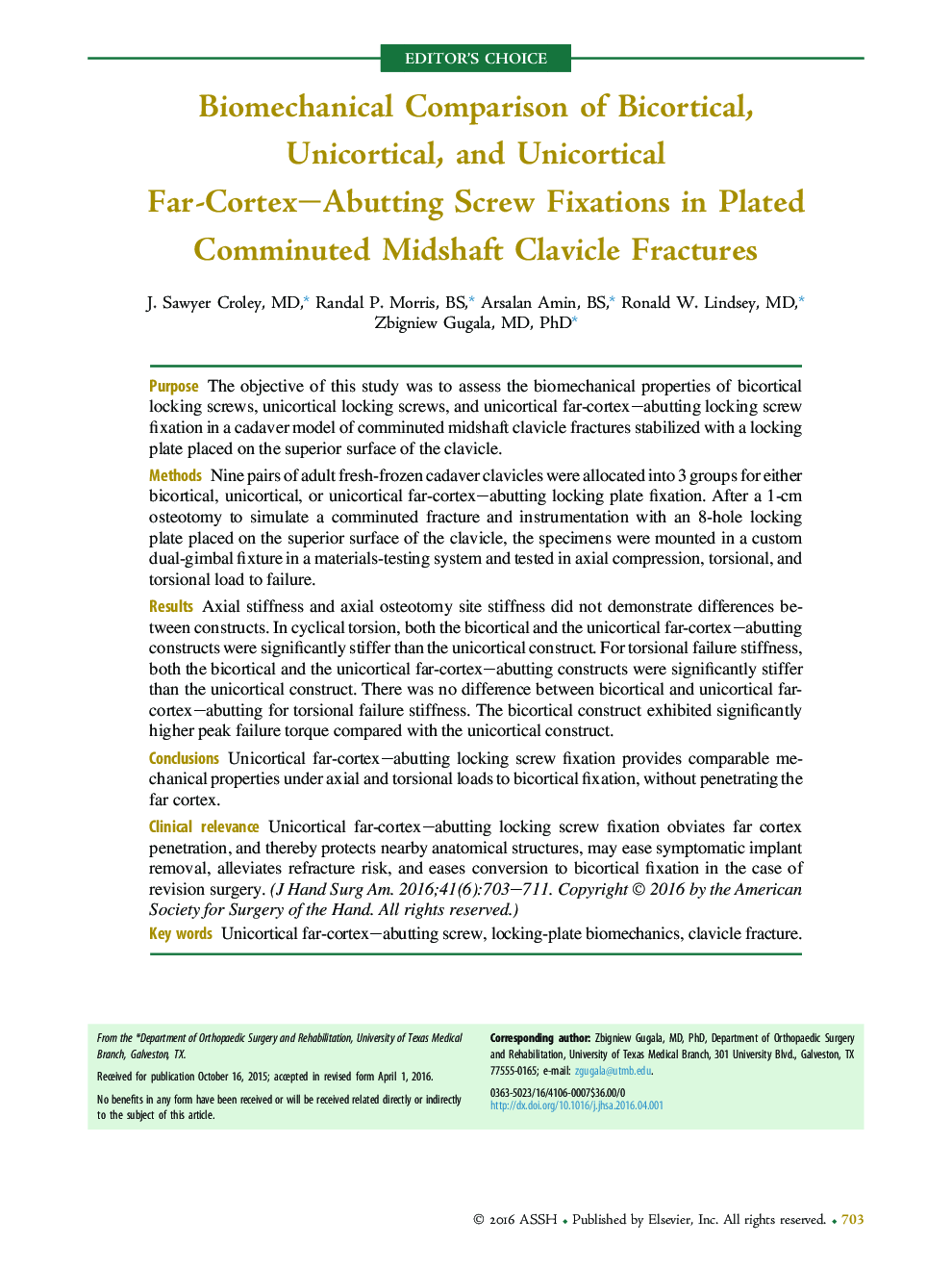| کد مقاله | کد نشریه | سال انتشار | مقاله انگلیسی | نسخه تمام متن |
|---|---|---|---|---|
| 4066065 | 1604343 | 2016 | 9 صفحه PDF | دانلود رایگان |

PurposeThe objective of this study was to assess the biomechanical properties of bicortical locking screws, unicortical locking screws, and unicortical far-cortex–abutting locking screw fixation in a cadaver model of comminuted midshaft clavicle fractures stabilized with a locking plate placed on the superior surface of the clavicle.MethodsNine pairs of adult fresh-frozen cadaver clavicles were allocated into 3 groups for either bicortical, unicortical, or unicortical far-cortex–abutting locking plate fixation. After a 1-cm osteotomy to simulate a comminuted fracture and instrumentation with an 8-hole locking plate placed on the superior surface of the clavicle, the specimens were mounted in a custom dual-gimbal fixture in a materials-testing system and tested in axial compression, torsional, and torsional load to failure.ResultsAxial stiffness and axial osteotomy site stiffness did not demonstrate differences between constructs. In cyclical torsion, both the bicortical and the unicortical far-cortex–abutting constructs were significantly stiffer than the unicortical construct. For torsional failure stiffness, both the bicortical and the unicortical far-cortex–abutting constructs were significantly stiffer than the unicortical construct. There was no difference between bicortical and unicortical far-cortex–abutting for torsional failure stiffness. The bicortical construct exhibited significantly higher peak failure torque compared with the unicortical construct.ConclusionsUnicortical far-cortex–abutting locking screw fixation provides comparable mechanical properties under axial and torsional loads to bicortical fixation, without penetrating the far cortex.Clinical relevanceUnicortical far-cortex–abutting locking screw fixation obviates far cortex penetration, and thereby protects nearby anatomical structures, may ease symptomatic implant removal, alleviates refracture risk, and eases conversion to bicortical fixation in the case of revision surgery.
Journal: The Journal of Hand Surgery - Volume 41, Issue 6, June 2016, Pages 703–711